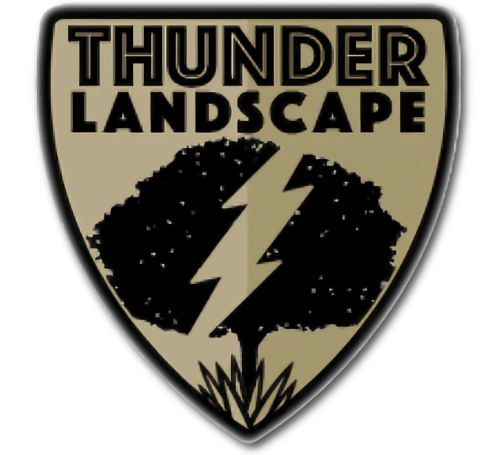Metro Phoenix / Communities / Tempe
Tempe Overview
The City of Tempe is in the heart of Metro Phoenix and borders the City of Phoenix to the west, Scottsdale to the north, Mesa to the east, and Chandler on the south. Its blend of higher education, industry, culture, and transportation infrastructure ensures Tempe’s continued central role within Metropolitan Phoenix.
The city is home to Arizona State University (ASU), one of the largest public research universities in the nation. ASU plays a critical role in driving the local economy, fostering startups, and contributing to research and development in key industries.
Tempe offers a mix of cultural, entertainment, and outdoor activities, making it a central gathering place for the region. Tempe Town Lake and Mill Avenue in Downtown Tempe are vibrant areas that combine commercial, retail, and recreational offerings, further bolstering Tempe’s economic vitality.
History
Tempe’s early settlement began with Hispanic families from southern Arizona who constructed the first irrigation canals and established small farms near Tempe Butte. The town was originally named “San Pablo” by these settlers, but it was later renamed Tempe in 1879 by pioneer Charles Trumbull Hayden, after the Vale of Tempe in Greece. The commonly accepted date for the establishment of Tempe is 1871. This is when Charles Hayden built the first building on his homestead. The Maricopa County Board of Supervisors voted to incorporate Tempe on November 26, 1894. The completion of Roosevelt Dam in 1911 ensured a reliable water supply, fostering the growth of farming communities in the Salt River Valley, and by 1912, Arizona became a state.
Tempe remained an agricultural community until after World War II, when rapid growth occurred as veterans and new residents moved to the area. The city’s expansion led to the disappearance of local farms, and by 1974, Tempe had reached its current boundaries. In 1958, the town’s small teachers college had evolved into Arizona State University, contributing to the city’s modern development.
In the 1980s and 1990s, Tempe experienced significant growth and transformation, evolving from a largely suburban community into a more urban, economically diverse city. ASU continued to be a major influence, but Tempe also became a center for technology, finance, and corporate offices. Large companies, such as Motorola, established operations in Tempe, signaling a shift toward more advanced industries and corporate growth. Downtown Tempe, particularly Mill Avenue, underwent significant revitalization. The area transformed into a vibrant center for dining, shopping, nightlife, and cultural events. The development of Tempe Town Lake was completed in 1999. The area became home to major commercial developments, civic events, parks, and residential complexes, marking a shift in the city’s urban landscape.
City Government
The Tempe City Council serves as the legislative branch of the City of Tempe, with its members elected at large by the city’s voters. The council consists of six elected members, alongside the mayor, who is also directly elected by the public rather than appointed by the council.
Business
Several factors in business and industry contribute to Tempe’s economic appeal.
Transportation Infrastructure: Tempe’s central location at the heart of the Metropolitan Phoenix makes it a good fit for many businesses. The city has access to major highways such as Interstate 10, Loop 101, and US 60, and its location near Phoenix Sky Harbor International Airport, make it convenient for air travelers. For companies involved in logistics, distribution, and manufacturing, Sky Harbor offers efficient access to air freight services, reducing transit times and enhancing supply chain efficiency.
Technology and Innovation: With a strong tech presence, Tempe has become a hub for innovation and startups, particularly in the technology sector. The city’s Novus Innovation Corridor and partnerships with ASU encourage research and development, fostering growth in biotech, sustainability, and software development. Tech giants Amazon and Microsoft also have facilities in Tempe, strengthening its position as a technology-driven city.
Higher Education Pipeline: ASU supplies a steady stream of highly-educated talent, especially in fields such as technology, engineering, business, and sustainability. The university’s research programs and partnerships with local businesses foster innovation, making Tempe stand out for new ideas and startups.
Business Sector Diversity: Tempe has a well-rounded economy with thriving industries, including technology, finance, education, healthcare, and advanced manufacturing. Many large companies have established headquarters or regional offices in Tempe, benefiting from the city’s resources and workforce.
Transportation
Interstate 10 (I-10): One of the major east-west highways in the nation. It connects Tempe with Downtown Phoenix, Sky Harbor Airport, and cities to the south such as Casa Grande and Tucson. This interstate is a critical route for commuters and commercial traffic.
US 60 (Superstition Freeway): Important east-west corridor connecting to Mesa and Gilbert to the east and Phoenix, through I-10, to the west.
Loop 101 (Price Freeway): Runs along the eastern border of Tempe, connecting the city to northern parts of Metro Phoenix, such as Scottsdale and north Phoenix, as well as Chandler and the southeast Valley. It is a key route for accessing various business centers and residential areas.
Mill Avenue: Major local street running through Downtown Tempe for businesses, retail, restaurants, and entertainment.
Phoenix Sky Harbor International Airport: Tempe’s close proximity to the airport plays a significant role in terms of connectivity and accessibility.
2023 Population (estimate)
City of Tempe: 193,490
Arizona: 7,427,991
Median Household Income (2022)
City of Tempe: $76,007
Arizona: $74,568
Estimated Home Value (2024)
City of Tempe: $482,393
Arizona: $433,271
Median Age (2022)
City of Tempe: 29.5
Arizona: 38.6
Land area: 40.1 square miles
Population density:
4,641 people per square mile

Novus Innovation Corridor
Adjacent to ASU’s Tempe campus and served by multi-modal transportation connections, Novus combines a mix of uses, including residential, office, retail, hotel and vibrant public spaces, to create a walkable, and sustainable new urban district.













